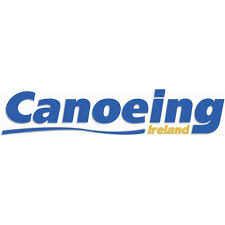Governance Improvement Initiative – Accountability & Transparency
ISSUE ACTION IMPACT
Problem to be solved
Due to organisational turbulence over a number of years a culture of mistrust developed within Canoeing Ireland. Many stakeholders viewed leaders within the organisation with suspicion, communication was stilted, and the organisation became argumentative and inwardly focused. Sporting bodies rely heavily on the goodwill of volunteers to drive programmes at local level. It was apparent that volunteers felt let down by the organisation and their very valuable work became siloed and focused on their own area of interest. Shared strategic goals, which were timed for completion during this period, were negatively impacted by this disengagement. There was a need for radical action to mend the organisation and create a positive and productive culture. The board took collective responsibility for driving positive change through a series of measures designed to increase accountability and transparency. The board recognised the need for an integrated and interactive strategy for cultural change.
Input – Building Trust
The board recognised that a core enabler of cultural change is a high level of trust. Relationships are complex and so is the trust building process. Being held to account, owning mistakes, being open to feedback and calling out behaviours that do not align with stated values became the norm in all board activities. The board supported this new behaviour with the following actions:
1. Signing a code of conduct which provided guidance on expected behaviours and interactions at meetings.
2. Attending a governance training workshop.
3. Welcoming non-executive members to the board to address any skills gaps that existed.
4. Creating a culture of openness and collaboration at board meetings.
5. Keeping stakeholders updated on activities through regular communication on the website and social media channels.
Input – Increasing Transparency
The board recognised early in the change process that communication with stakeholders was an issue. Although there was an abundance of outward communication, it was difficult to assess whether it was being heard. Communication was one sided and feedback was sporadic and negative. It appeared that the board had become irrelevant to many active members. For communication outward to have any impact it was necessary to adjust not only the tone of communications, but also the content.
Stakeholder mapping, with an emphasis on areas of interest was undertaken. Information was packaged so that it was relevant to the recipient. Keeping communications simple, to the point and delivered on the preferred channel of the stakeholder took time and forethought, but it was worth the effort. While cross channel electronic communication has allowed for instant delivery of information, it was recognised that phone conversations and face to face meetings were necessary to rebuild relationships. The response to this change was increased engagement with stakeholders and an increase in support for activities and the organisation. Previously one-sided communication became a conversation. Over a period of time the overly apologetic tone, which had become the norm, was softened and a positive new message of growth and development was adopted. Resourcing this area was the first step towards rebuilding trust with stakeholder.
Input – Accountability – Reporting
The chart of accounts was outdated and did not provide an optimum level of transparency for stakeholders. Simplicity in the chart of accounts is as essential as precision. Redefining the chart of accounts to allow all stakeholders to measure financial activity against performance goals was an important step in increasing transparency. The change also recognised that accounts are sometimes difficult to read without a background in accountancy. The current version of the accounts is a useful tool for stakeholder assessment of board performance and has enhanced transparency and accountability.
Outcome – Embedded accountability
Building accountability into every action and decision, reducing ambiguity, calling out bad behaviour, reflecting on successes and failures and renewed focus on high level impacts became the norm. This did not happen overnight and there were peaks and troughs throughout the process, but it was underpinned with the conviction that it was the right thing to do.
Impact
Based on results of stakeholder surveys, satisfaction ratings with Canoeing Ireland are rising. There has been a positive response to new initiatives, and we are becoming a cohesive team. It would be naïve to presume that we can relax and enjoy a bright future. Living up to expectations created by setting the bar high demands care and attention. After action and performance reviews and honest self-reflection continue to be measured on metrics which are aligned with company values.




